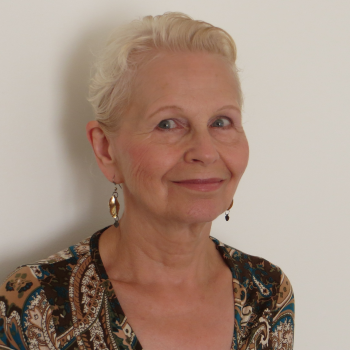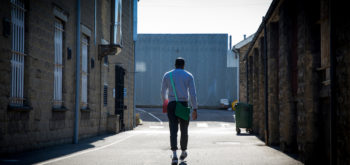 Why it is too easy for innocent people to be wrongly accused of sexual abuse
Why it is too easy for innocent people to be wrongly accused of sexual abuse
At the end of last month a special BBC Crimewatch Programme with a helpline invited callers to report non-recent sexual offence, and on the same day (February 27) the first public hearing of the Independent Inquiry into Child Sexual Abuse (IICSA) was held. These are the latest, well-publicised, events in two to three decades of publicity about widespread hidden sexual and physical abuse of children, women and vulnerable adults, calling for people to report their experiences or suspicions of such abuse. In the same week, the Head of Operation Hydrant (the nationwide police inquiry into historical child sexual abuse) noted that the numbers of such offences reported were continuing to rise and that police forces had ‘reached saturation point’.
Rarely if ever do those leading such inquiries mention or warn against the possibility of some of those allegations being false. This therefore is a good time to take stock of policy and legal developments that increase the risk of innocent people being caught in the net. This is not to ignore the false negatives (people who go unprosecuted or who are acquitted when they are guilty) that also occur. But the risk of errors cuts both ways. In the space available the following is a selective and truncated listing of these developments.
More details and sources can be found in Burnett, Hoyle and Speechley (2017 forthcoming) and in contributions to Burnett (ed.) ‘Wrongful Allegations of Sexual and Child Abuse’.
General features that make handling of sexual abuse (particularly non-recent) prone to mistakes
No physical evidence and no requirement for corroboration
A general feature is that there is very often no physical evidence that a crime has been committed. The complainant’s account is the evidence, and this is taken on trust in the absence of contrary evidence. As in other jurisdictions (Scotland being an exception), in England and Wales there is no requirement for the professed victim to provide corroboration beyond their own testimony in order for the CPS to prosecute and for a jury to find the defendant guilty.
A moral obligation to report abuse
There is heighted awareness of childhood sexual abuse (CSA) and rape, and constant media coverage rouses a moral obligation to look for signs of abuse and to report suspicions, or to own up to one’s own victimisation and become a voice for survivors. Newspapers, television and the internet provide a continuous onslaught of shocking cases of sexual exploitation and child abuse, burning into public consciousness, ensuring this is high profile on the political agenda, and remains a primary matter of public interest. Similarly, publicity campaigns by child protection charities and support groups for victims of rape and domestic violence, prompt reporting of suspicions as a civic duty.
Invitations to come forward and reassurances of anonymity
At the end of the many television dramas in which the psychological damage of childhood sexual abuse and rape is represented, helplines are advertised via which people are invited to discuss how they have been affected and to seek support. It is now widely claimed that many psychological problems, alcohol and drug additions, and relationship breakdown can be attributed to childhood sexual abuse. People with mental health issues learn that they may have PTSD having suppressed painful memories of abuse. Sufferers are encouraged to report their abusers no matter how long ago. The concept of ‘closure’ is used in connection with seeing their abusers prosecuted, convicted and punished.
There is no Statute of Limitations
The UK does not have a Statute of Limitations against the prosecution of crimes in the UK (except for ‘summary’ offences, tried in the magistrates’ court): thus there are no time limits on bringing prosecutions for sexual offences or child abuse alleged to have occurred decades ago, if the accused is still alive. There are obvious difficulties for the defence in obtaining providing exculpatory evidence.
The relative ease with which compensation can be claimed
As well as reporting past victimisation as a civic duty and to seek therapeutic help, compensation services provide a way to make some money in the process. Individual claims can be made from the Criminal Injuries Compensation Agency (CICA) or through a lawsuit, often as part of a group action, pursued by personal injury solicitors. Importantly, the alleged abuser does not need to have been convicted, and may be deceased, and under section 33 of the Limitation Act 1980 the court can exercise its discretion to allow a claim for compensation to be made many years and perhaps decades after the alleged child abuse (for example, if psychiatric problems are later attributed to the abuse or if memories of abuse are recovered during counselling).
Once accused, always listed
Records are kept of people who have been investigated in response to allegations of child abuse, rape and other sexual offences, whether or not they were charged or convicted. The Police National Computer includes data on arrests, and the Police National Database records ‘soft’ local intelligence: for example details of allegations or police investigations that did not lead to arrest or charge. Quite apart from implications for employment or voluntary work with children or vulnerable adults when DBS checks are necessarily made, being listed as the subject of a previous complaint would be taken into account should that individual ever be accused again.
An absence of warnings about the risk of false allegations
In policies that promote belief in allegations of abuse, and encourage victims to come forward, it is rare for warnings to be given or acknowledgements to be made of the concomitant dangers of false allegations.
Specific developments that have facilitated reporting of abuse, prosecution and conviction
Removal of the corroboration warning
As in other jurisdictions (Scotland being an exception), there is no requirements in England and Wales for the alleged victim to provide corroboration beyond their own testimony for the defendant to be found guilty. Whereas there was previously a requirement for judges to warn juries about the danger of convicting on the uncorroborated testimony of a complainant of a sexual offence, this was abrogated by Section 32 the Criminal Justice and Public Order Act 1994. It was left as a matter for the judge’s discretion what, if any warning, he or she considers appropriate.
In the 1990s there were significant modifications to ‘similar fact evidence’
As the name suggests, ‘similar fact’ testimonial evidence was originally permitted only if there were ‘striking similarities’ between provable facts. This was extended by a Court of Appeal ruling in 1946 to include similar allegations. Two further judgments by the House of Lords in the early 1990s weakened the safeguards further. In 1991, in DPP v P, the court rejected the requirement that allegations, in order to be admissible, should be ‘strikingly similar’. In 1994, in DPP v H, the court held that, in ruling on the admissibility of a series of similar allegations, the judge should generally assume that the allegations in question were true. See Similar Fact Evidence: the origins and erosion of the modern similar fact principle. (Webster, R. (2002)).
Developments that improved the prospects for claiming compensation for abuse, and therefore making allegations
Following the enactment of the Criminal Injuries Compensation Act 1995, the Criminal Injuries Compensation Agency established a statutory scheme for setting standard amounts to be paid for injuries (‘the Tariff’). The current awards for injuries caused by sexual abuse range from £1,000 to approximately £44,000. Also in 1995, ‘no win, no fee’ legal cases – that is, conditional fee agreements (CFAs) – were introduced in 1995 to replace legal aid funding of litigation. With CFAs, claimants do not have anything to pay when the case is lost, but agree to a percentage being deducted from successful claims. These, and damages based agreements (DBAs), are considered to be more accessible to claimants because there are no initial payments and bureaucratic formalities.
Bad character evidence
With the implementation of the Criminal Justice Act (CJA) 2003, ‘similar fact evidence’ was largely overtaken by ‘bad character evidence’, although common law ‘similar fact’ principles are operative in the context of propensity and cross-admissibility of allegations. ‘Bad character evidence’ is broadly defined and wide in scope (CJA 2003, ss 98-113). It includes previous convictions, and evidence of specific acts of misconduct and reprehensible behaviour. But it also includes the following more speculative indicators of bad character: ‘evidence of reputation for misconduct’; ‘an offence for which the defendant has never been prosecuted’; and ‘an offence for which the defendant was acquitted’. (This and the next paragraph draw on Edge, R. and Mills, A. (eds.) (2016) Evidence, 18th Edition. Oxford: Oxford University Press.)
Cross-admissibility
In establishing the defendant’s propensity for relevant bad behaviour, from the standpoint of a defendant who is innocent, some rules of evidence regarding cross-admissibility would be troubling. The court can take account of allegations that did not result in a conviction; evidence in relation to one count (that might be a false allegation) is cross-admissible in relation to another count; and ‘the judge is required to assume that the evidence is truthful unless no jury could reasonably believe it’.
The Victims’ Code
The introduction of a Code of Practice for Victims, was established by the Domestic Violence, Crime and Victims Act 2004. Introductory leaflets explain that a victim is anyone who tells the police about a crime in England and Wales, and that this brings them various entitlements, including: referral to ‘victim services organisations that can provide you with practical and emotional support’, and advice on obtaining compensation (Ministry of Justice, 2014, p.3; p.8).
Special measures to protect and assist complainants in trials for sexual crimes
Complainants of sexual offences are automatically assumed to be vulnerable and therefore eligible, unless they opt out, to be granted special measures, under the terms of the Victims’ Code. These include: screens to shield the witness from the defendant; live links to enable the witness to give evidence during the trial from outside the court through a televised link to the courtroom; video-recorded interviews with the witness before the trial; use of intermediary to assist the witness to give evidence at court (and also at the investigation stage); evidence given in private, after members of the public and press have left the court (except one named press representative). Sparing the complainant in a sexual offence trial from face to face cross-examination by the defence is a humane practice, but may be in tension with Article 6(3) of the Human Rights Act, the right to examine witnesses against an accused.
Prosecution Policies
The Crown Prosecution Service has based its Guidelines for Prosecuting Rape and Sexual Abuse on the Victims’ Code. Changes in the approach to complaints about abuse were reflected in the Guidelines on Prosecuting Cases of Child Sexual Abuse, introduced in 2013. The Guidelines also specified that ‘prosecutors should guard against looking for “corroboration” of the victim’s account or using the lack of “corroboration” as a reason not to proceed with a case.’ (2013, para. 55)
Policing policies in relation to victims
Investigations following allegations of sexual offences are carried out from a position of believing the ‘victim’, with most official documentation choosing not to refer to ‘complainants’. For example, guidance for police senior investigating officers under ‘Operation Hydrant’ underscores the importance of belief from the perspective of victims’ therapeutic needs. A report in 2014 by Her Majesty’s Inspector of Constabulary, Crime Recording: Making the Victim Count, recommended: ‘The presumption that the victim should always be believed should be institutionalised’. The Crown Prosecution Service and Metropolitan Police Service (2015) Action Plan on Rape asserts that prosecutors ‘must focus their case on the behaviour of the accused, not the complainant’ (p.2).
Victims’ right to review
In June 2013, the CPS launched a scheme which allows victims of crimes to seek a review of CPS decisions not to charge, to discontinue or otherwise to terminate proceedings. The title of this right is telling. Calling the complainants ‘victims’ carries a presumption of belief in their claims and is prejudicial to the defendant.
Conclusion
Everyone concerned about victims of sexual offences and physical abuse could read the preceding list with approval, and think ‘quite right too’. Tremendous progress has been made in tackling the problems and there is more to be done, particularly to intervene. To the extent that these developments are helpful in counteracting abuse and making life better for victims, they are to be welcomed. At the very least though, there must be acknowledgement of the dangers they pose of widening the net to include innocent people. Resisting the significance of those dangers by arguing that false (untrue) allegations are rare does not allow for the methodological blocks against collecting such data, and does not allow for the dynamic context of a changing landscape that provides more scope for mistaken or opportunistic claims to be made.
When the beep goes as a person walks through the airport metal detector, we don’t immediately assume that a terrorist has been caught. We know there are numerous false alarms. But when someone is caught in the spotlight of publicity after being accused of historical child abuse, s/he will be cast in the image of a sexual predator with usually no forensic means of revealing the error. There is no equivalent of an x-ray machine to act as a corrective.







